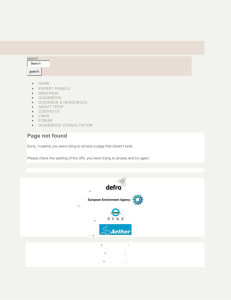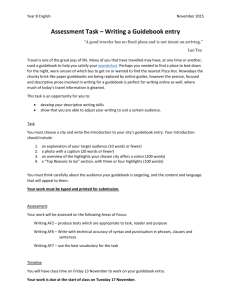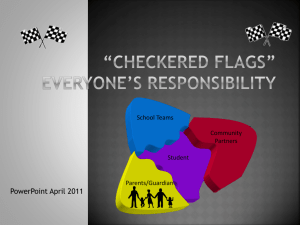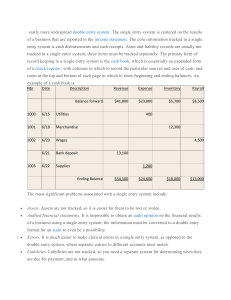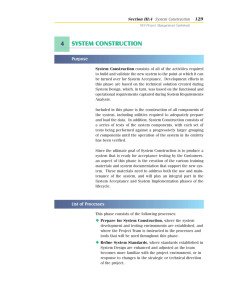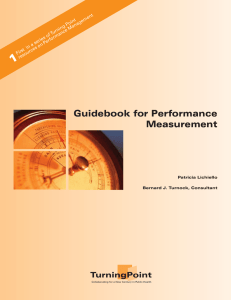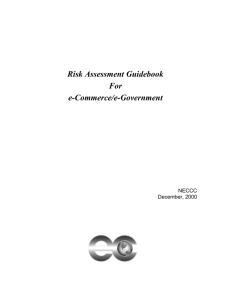Document 13047667
advertisement
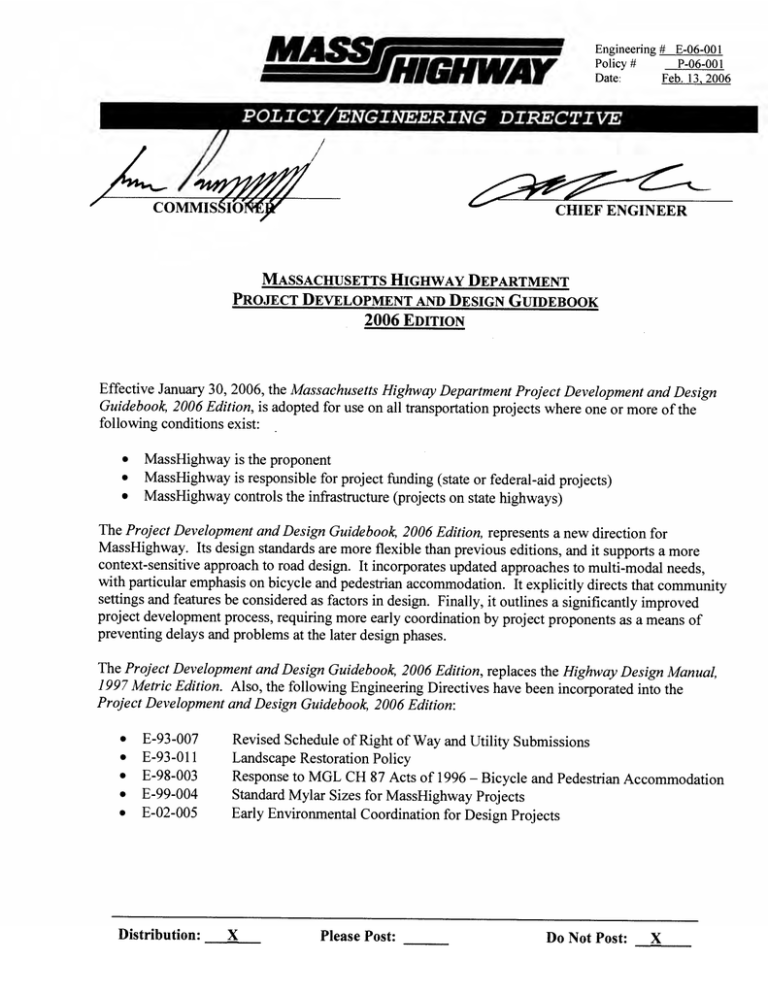
w CHIEF ENGINEER PROJECTDEVELOPMENT AND DESIGNGUIDEBOOK Effective January 30,2006, the Massachusetts Highway Department Project Development and Design Guidebook, 2006 Edition, is adopted for use on all transportation projects where one or more of the following conditions exist: MassHighway is the proponent MassHighway is responsible for project &ding (state or federal-aid projects) MassHighway controls the infrastructure (projects on state highways) The Project Development and Design Guidebook, 2006 Edition, represents a new direction for MassHighway. Its design standards are more flexible than previous editions, and it supports a more context-sensitive approach to road design. It incorporates updated approaches to multi-modal needs, with particular emphasis on bicycle and pedestrian accommodation. It explicitly directs that community settings and features be considered as factors in design. Finally, it outlines a significantly improved project development process, requiring more early coordination by project proponents as a means of preventing delays and problems at the later design phases. The Project Development and Design Guidebook, 2006 Edition, replaces the Highway Design Manual, 1997 Metric Edition. Also, the following Engineering Directives have been incorporated into the Project Development and Design Guidebook, 2006 Edition: E-93-007 E-93-011 E-98-003 E-99-004 E-02-005 Distribution: Revised Schedule of Right of Way and Utility Submissions Landscape Restoration Policy Response to MGL CH 87 Acts of 1996 - Bicycle and Pedestrian Accommodation Standard Mylar Sizes for MassHighway Projects Early Environmental Coordination for Design Projects X Please Post: Do Not Post: X Portions of the Guidebook may be used for all projects as applicable, however: , Projects that have already received Project Review Committee approval need not conform to all new planning process guidelines (in Chapter 2). Projects that have already received 25% design approval need not conform to all new design guidelines and may continue to be designed in accordance with the 1997 Design Manual standards. Proponents may, at their discretion, choose to follow the new planning and design guidelines for projects at any stage. However, proponents must recognize that electing to follow these guidelines will require them to account for any additional time and funds needed to revisit any element(s) of the planning process and design guidelines. Projects on the National Highway System (NHS) shall follow all of the conditions previously described, except that the criteria and controls employed in the geometric design must comply with Title 23, Code of Federal Regulations, Part 625 (23 CFR 625) in accordance with Federal Highway Administration (FHWA) policy. This means that projects on the NHS must be in conformance with the latest edition of the AASHTO Policy on Geometric Design of Highways and Streets for design standards and with other federal standards, policies and criteria specified in 23 CFR 625.4, regardless of funding source. In addition, projects on the Interstate System must be designed in conformance with the latest edition of the AASHTO Policy on Design Standards, Interstate System. Designers must apply appropriate design criteria and secure all necessary design exceptions from FHWAYsthirteen controlling criteria. The Chief Engineer will be responsible for distribution of the Guidebook. MassHighway will provide one complimentary copy of the Guidebook (print andlor CD format) to each municipality and Regional Planning Agency in the Commonwealth and to other government entities that request copies. MassHighway will sell copies of the Guidebook at the following prices: $80 for printed version in 3-ring binder $10 for electronic version on CD.
